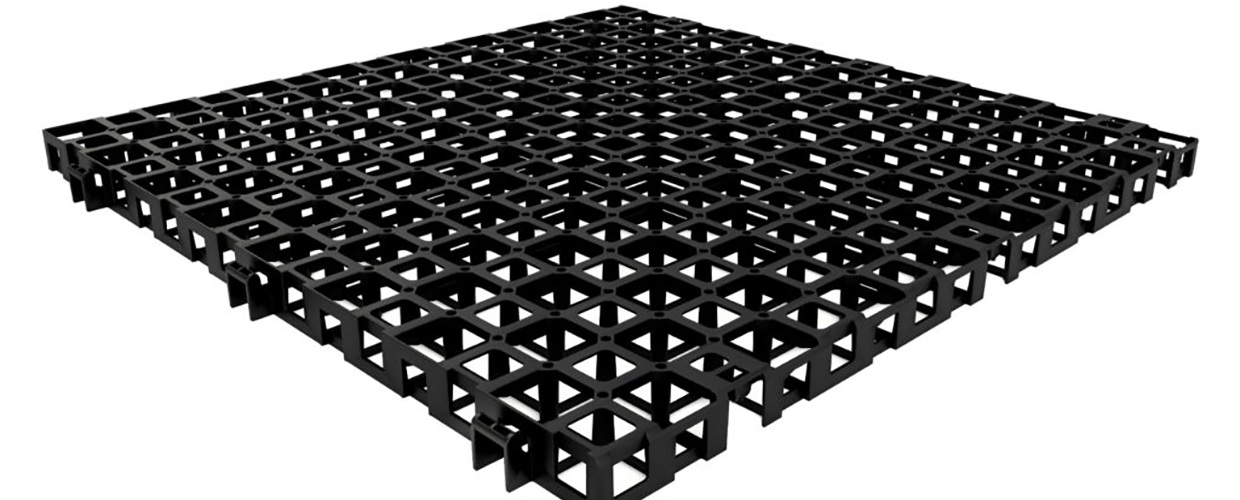Geoplast’s Geocell: the new system for the surfaces’ drainage
by Nikola Tosic, 23 February 2017

Geocell, modular panel for horizontal and vertical drainage systems.
Geocell is a new product that enriches the range of Geoplast’s Water Solutions. Geocell allows the realization of cavities of 3 cm in thickness at the bottom of each type of surface, to collect rainwater and favor its natural infiltration into the soil.
Considering that the most violent storms, or those of short duration and high intensity, discharge even 60 mm of water in half an hour, Geocell makes the 50% of the precipitation infiltrates into the subsoil, thus avoiding the crisis of the drainage network and, consequently, the problems of flooding.
The confirmation of the panel enables a bi-directional drainage, that is it combines the vertical infiltration component with the possibility of water flowing in the transverse direction, essential for an effective drainage of the areas with a certain slope or for situations in which the subsoil presents a reduced permeability. Thanks to the high vacuum index (about 91%) Geocell can replace the 10-15 cm of gravel traditionally provided below pavings or sports fields for rainwater drainage.

Geocell panel allows bidirectional drainage, thus preventing floods.
The tests conducted on the product have shown how the Geocell structure has a high resistance to applied loads (meets the requirements of standard DIN1072 for load class SLW60, heavy vehicles), thus allowing the positioning of the panel even below areas subject to heavy vehicles traffic, with excavation thicknesses minimized. Geocell is also equipped with an innovative coupling which ensures the possibility to rotate a grid relative to one another up to an angle of 90°. This feature allows an easy installation of the product under surfaces with a variable slope or even along the basement walls to create a draining interspace to protect the structures.
Geocell applications:
• Underdraining pavements to improve drainage and prevent flooding;
• Football fields or golf courses to avoid stagnant water and allow the sport in optimal conditions;
• Along basement walls to protect the waterproofing of the structure;
• Within concrete flower beds to avoid excessive accumulation of water in the soil.